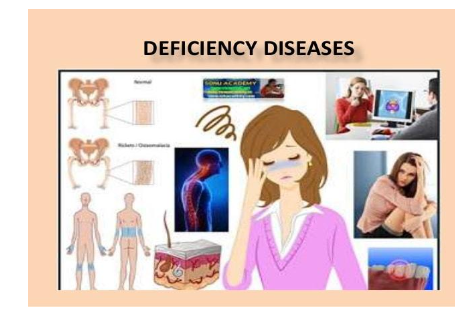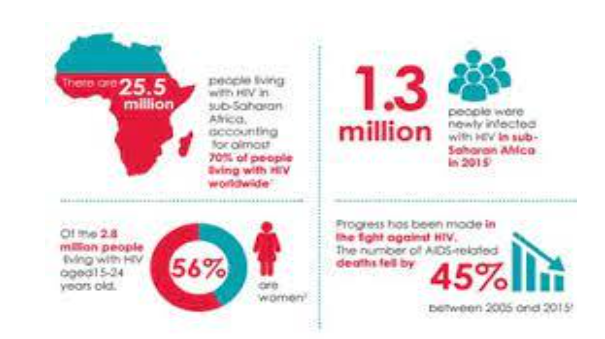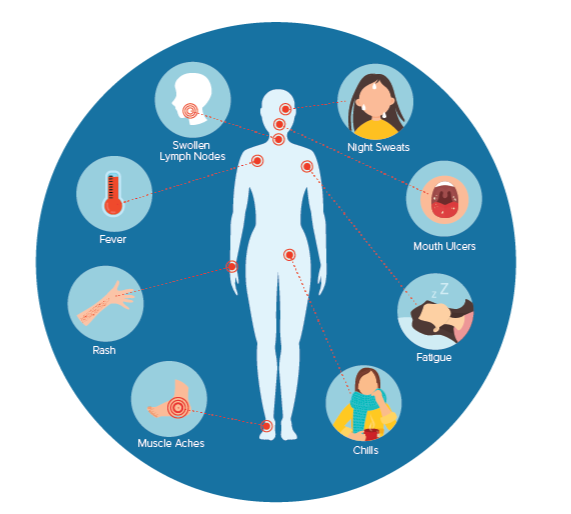Human Disease And Prevention
Introduction
In this study, the category of the diseases is to be explained along with the cause and risk factors. Thereafter, one specific disease is to be analysed where its incidence and way of prevention is to be discussed.
Section 1
Infectious diseases mainly disorder that is caused by different organisms that are normally harmless or may be helpful but under certain condition they lead to the development of disease. The general symptoms of these diseases are diarrhoea, fever, muscle ache, coughing and others (Nicastri et al., 2020). Understanding these conditions is crucial for those seeking healthcare dissertation help, as it informs effective treatment and management strategies.

Deficiency diseases are disorder which is developed as a result of lack of any important nutrient in the diet that are usually minerals or vitamins for longer time. The common symptoms of the disease are shortness of breath, dizziness, loss of weight, irregular heart rate, fatigue, yellow or discolouration of skin and others (Godswill et al., 2020).

Hereditary diseases are health issues that are present in individual due to defective genes inherited from the parent generation to the current generation. The common symptoms of the disease are unusual physical appearance, different coloured eyes, excessive body hair and others (Barshir et al., 2018).

Physiological diseases are health problems which is caused by the hindered functioning of the body organs. The common symptoms of the disease are anxiety, sudden mood changes, agitation, alteration in level of energy and others (Gommers and Bakker, 2019).
The main cause of infectious diseases is presence of virus in the body that invade and divide inside the healthy cells to damage them, entry of bacteria as small single-celled organisms, presence of fungi pores and parasites. The risk factor for infectious diseases are intake of steroids medications, hindered immune system, presence of HIV and others (Rohr et al., 2019). The causes of deficiency diseases include lack of enough vitamins A, B, C and E as well as other minerals in the body. The risk factor for the disease are presence of little to no amount of natural vitamin and minerals in food, pregnancy, intestinal problem, presence of alcohol abuse, and certain medication (Godswill et al., 2020). The causes of hereditary diseases include presence of mutated genes in the body or extra pair of genes in the body that are passed from previous generation. The risk factor of the diseases is old age, presence of family with genetic abnormality, chromosomal abnormality and others (Lourida et al., 2019). The risk factor for physiological diseases are combination of lifestyle, genetic and other broader factors. The exact cause of the physiological disease is unknown but contributing aspects include imbalance of chemicals in the brain, hindered childhood experiences, illness, prenatal exposure heredity, stress and others (Hackett and Steptoe, 2017).
There are mainly two types of infection spreading ability that is through direct contact or through indirect contact. In direct contact, the pathogen of the disease is spread through person-to-person contact which occurs during touching or exchanging body fluid from the infection person by others and droplet contact that occurs through droplets released from sneezing and coughing (Patel et al., 2020). The current coronavirus is one such viral pathogen that spreads through person-to-person contact as infected person on coming in contact with contaminated body surface develops the disease and it is transmitted through inhalation of droplets released from coughing and sneezing by a healthy individual from infected person (Karia et al., 2020).
The indirect mode of infectious disease transmission is air, contaminated objects, food or drinking water, animal-to-person contact, insect bite and others (Vella et al., 2020). The viral pathogen like coronavirus is mentioned to be airborne but can travel distances such as six feet to reach the health individual to cause infection (Delikhoon et al., 2021). The viral pathogens are transmitted through food due to the indirect or direct contamination of the foods with human faeces (Patel et al., 2020). The coronavirus can remain active for small amount of time on the surface of objects from where they are indirectly transmitted to the individual to cause infection (Mukhra et al., 2020).
Section 2
The Human Immunodeficiency Virus (HIV) is the virus that attacks the immune system of the body to cause depletion making the person suffer from various kinds of health issues over time. It is the virus that is responsible for causing AIDS (acquired immunodeficiency syndrome) (Ramière et al., 2019). According to World Health Organisation (WHO), by the end of 2020, 37.7 million people worldwide are mentioned to be living with HIV and nearly 2/3rd of them which is nearly 25.4 million are living in the African region. In 2020, 1, 500,000 people are mentioned to be newly affected with HIV and 680,000 people are mentioned to have due to causes -related to HIV. According to current data, nearly 84% of the people living globally are have known diagnosis of HIV and for reaching the target to 90%, nearly 2.3 million more people are to be diagnosed and made aware of HIV infection (WHO, 2020).

In African Region, nearly 25.3 million people are living with HIV and among them 76% are on treatment with estimated 19.4 million people been involved in antiretroviral therapy in 2020. In the region, additional 880,000 people are infected newly with HIV but the rate of infection of HIV among people of all ages is reduced to 0.82 out of 1000 uninfected people as of 2020 which as 0.19 in 2019 (WHO, 2020). This informs that though HIV has spread to new people, but the rate at which the disease was progressing is controlled to some extent as the rate of spreading of HIV is reduced than previous year. In the American Regions, the incidence of HIB in 2020 was reported to be 3.7 million with 71% people on treatment among which 2.6 million people are on antiretroviral therapy. The further estimated figures mention that nearly 150,000 people in the region are newly affected by HIV in 2020 and the infection rate has reduced to 0.15 per 1000 uninfected people in 2020 compared to 0.16 in 2019. Moreover, in the region, 45,000 deaths are reported to be caused due to HIV in 2020 which is decreased by 6.3% as reported in 2019 (WHO, 2020).
In the European region, it is estimated that 2.6 million people are affected by HIV as of 2002 and 1.7 million of them are on antiretroviral therapy. It is further mentioned that 170,000 people in the area are newly infected by HIV as of 2020 and HIV reporting among all ages in the area remain stable as 0.18 per 1000 people in the current year. Moreover, 40,000 deaths in the area has occurred due to HIV and it is increase of 6.3% as compared from 2019 (WHO, 2020). This informs more deaths are reported in European region compared to the African and American regions. Moreover, the most affected area by HIV is the African region compared to American and other regions.
The incidence of HIV as reported by WHO revealed the pattern that there is high level of HIV-infected individual living in the African region. This is evident as in the region 25.4 million people are affected while in rest of the regions such as America, Europe, South East Asia, Eastern Mediterranean and Western Pacific the prevalence of HIV is between 3-1 million (WHO, 2020). The reason behind the high prevalence in the area is mentioned to be lack of effective education among the people mainly the youth regarding the way HIV infection can be prevented (Ferré et al., 2019). The other pattern identified is that since 2020, 36 million people with HIV are identified to be adults and 1.7 million are 0-14 years of age and 53% of the HIV infected people are women (UNAIDS, 2020). This indicates that adults above the age of 15 years are more vulnerable to experience HIV compared to others. Moreover, the females are more affected by HIV compared to men in the world. The reason behind the incidence may be due to lack of use of protection during sex among the partners (UNAIDS, 2020).

Section 3
In preventing HIV, there are wide number of measures that can be taken by individual among which use of condoms during intercourse is the most effective measure to prevent sexual transmission of HIV. This is because HIV is present in the body fluids such a vaginal secretion in women and semen in male (Ham and Buckheit Jr, 2017). Thus, the use of male condoms avoids the transmission of HIV into female as well as female condoms protect men to get affected by HIV as it creates protective barriers to avoid contact to semen or vaginal secretion. The measure to be taken to avoid HIV transmission during blood transfer is ensuring use of the sterilised needle. This is because it would ensure the needle does not contain HIV from any infected person to transfer the infection to another (Yasin et al., 2019).
HIV can be prevented by taking measures of educating individuals regarding the way the disease is transmitted and ensuring access of resources such as condoms, sterilised needles and others that are needed by individuals to remain away from getting affected by the disease. This is because imparting knowledge regarding HIV transmission would lead people to understand the way they transfer through their actions which would intend them to take precautions to avoid such action. Moreover, enhanced knowledge regarding HIV transmission would make the common individuals understand the risk towards health related to the disease and immediate need of taking precautions in avoiding the disease (Garcia-Wilde, 2021). The presence of adequate number of condoms would help in ensureing safe intercourse where contact with the body fluid is avoided that is responsible for spreading HIV (Laher et al., 2020). The other measure to avoid HIV is ensuring the partners get tested for the presence of the infection. This is because HIV related symptoms are not always expressed in the person affected by it due to which they remain unaware of the infection and acts as key mode of transferring the infection to their partner while executing sexual intercourse (Areri et al., 2020).
The prior testing for HIV makes the partners remain aware of the HIV condition in them according to which they take precautions to prevent the transmission of the infection from one to another (Fonner et al., 2019). In the UK, certain policies and legislations are developed to take measures in preventing HIV and discrimination of people suffering from HIV. The Equality Act 2010 mentions all the individuals in the country are to be equally treated irrespective of their sex, health, caste and others (legislation.gov.uk, 2010). Thus, the Act protected discrimination of people suffering from HIV. The Act also informs that people do not have to reveal their HIV condition to the employer until they are involved in frontline work in the armed forces or involved in executing invasive procedures in healthcare (legislation.gov.uk, 2010). In the UK, the Offences Against the Person Act 1891 prosecutes people responsible for irresponsible transmission (section 20) and transmission of HIV intentionally (section 19). The people prosecuted under the law are punished accordingly on the proof of the charges against them (legislation.gov.uk, 1891). Thus, it can be seen that in UK legislations are present to punish people for irresponsible HIV transmission which is an effective legal measure in making people remain more aware to execute health check-up and avoid involvement in spreading of HIV.

Conclusion
The above discussion informs that there are four types of diseases such as infectious, hereditary, deficiency and physiological disease that are caused due to varied reasons. HIV is one of the major disease present globally that affect people of all ages.
Take a deeper dive into How to Apply Health Prevention with our additional resources.

Recommendation
The recommendation developed from the study is that increased education and awareness regarding HIV through healthcare campaign is to be provided to individual for preventing the spread of the disease. the other recommendation is that condoms are to be made to be used as mandatory during sexual intercourse to ensure lowering the transmission and prevalence of the disease.
References
- Areri, H.A., Marshall, A. and Harvey, G., 2020. Interventions to improve self-management of adults living with HIV on antiretroviral therapy: a systematic review. PloS one, 15(5), p.e0232709.
- Barshir, R., Hekselman, I., Shemesh, N., Sharon, M., Novack, L. and Yeger-Lotem, E., 2018. Role of duplicate genes in determining the tissue-selectivity of hereditary diseases. PLoS genetics, 14(5), p.e1007327.
- Delikhoon, M., Guzman, M.I., Nabizadeh, R. and Norouzian Baghani, A., 2021. Modes of transmission of severe acute respiratory syndrome-Coronavirus-2 (SARS-CoV-2) and factors influencing on the airborne transmission: a review. International journal of environmental research and public health, 18(2), p.395.
- Ferré, V.M., Gbeasor-Komlanvi, F.A., Collin, G., Dagnra, A.C., Le Hingrat, Q., Jaquet, A., Salou, M., Descamps, D., Charpentier, C. and Ekouevi, D.K., 2019. Prevalence of human papillomavirus, human immunodeficiency virus, and other sexually transmitted infections among men who have sex with men in Togo: a national cross-sectional survey. Clinical Infectious Diseases, 69(6), pp.1019-1026.
- Fonner, V.A., Mbwambo, J.K., Kennedy, C.E. and Sweat, M.D., 2019. The gendered experience of HIV testing: factors associated with prior testing differ among men and women in rural Tanzania. International journal of STD & AIDS, 30(9), pp.843-852.
- Garcia-Wilde, C.N., 2021. The Importance of Social Movements: A Student Perspective on HIV/AIDS. American Journal of Public Health, 111(7), pp.1261-1262.
- Godswill, A.G., Somtochukwu, I.V., Ikechukwu, A.O. and Kate, E.C., 2020. Health benefits of micronutrients (vitamins and minerals) and their associated deficiency diseases: A systematic review. International Journal of Food Sciences, 3(1), pp.1-32.
- Godswill, A.G., Somtochukwu, I.V., Ikechukwu, A.O. and Kate, E.C., 2020. Health benefits of micronutrients (vitamins and minerals) and their associated deficiency diseases: A systematic review. International Journal of Food Sciences, 3(1), pp.1-32.
- Gommers, F.J. and Bakker, J., 2019. Physiological diseases induced by plant responses or products. In Diseases of nematodes (pp. 3-22). CRC press.
- Hackett, R.A. and Steptoe, A., 2017. Type 2 diabetes mellitus and psychological stress—a modifiable risk factor. Nature Reviews Endocrinology, 13(9), pp.547-560.
- Ham, A.S. and Buckheit Jr, R.W., 2017. Designing and developing suppository formulations for anti-HIV drug delivery. Therapeutic delivery, 8(9), pp.805-817.
- Karia, R., Gupta, I., Khandait, H., Yadav, A. and Yadav, A., 2020. COVID-19 and its Modes of Transmission. SN comprehensive clinical medicine, pp.1-4.
- Laher, F., Salami, T., Hornschuh, S., Makhale, L.M., Khunwane, M., Andrasik, M.P., Gray, G.E., Van Tieu, H. and Dietrich, J.J., 2020. Willingness to use HIV prevention methods among vaccine efficacy trial participants in Soweto, South Africa: discretion is important. BMC Public Health, 20(1), pp.1-9.
- legislation.gov.uk 1891, Offences Against the Person Act 1891, Available at: https://www.legislation.gov.uk/ukpga/Vict/24-25/100/data.pdf [Accessed on: 18 November 2020]
- Lourida, I., Hannon, E., Littlejohns, T.J., Langa, K.M., Hyppönen, E., Kuźma, E. and Llewellyn, D.J., 2019. Association of lifestyle and genetic risk with incidence of dementia. Jama, 322(5), pp.430-437.
- Mukhra, R., Krishan, K. and Kanchan, T., 2020. Possible modes of transmission of Novel coronavirus SARS-CoV-2: a review. Acta Bio Medica: Atenei Parmensis, 91(3), p.e2020036.
- Nicastri, E., Petrosillo, N., Ascoli Bartoli, T., Lepore, L., Mondi, A., Palmieri, F., D’Offizi, G., Marchioni, L., Murachelli, S. and Ippolito, G., 2020. National institute for the infectious diseases “L. Spallanzani” IRCCS. Recommendations for COVID-19 clinical management. Infectious disease reports, 12(1), pp.3-9.
- Patel, A., Patel, S., Fulzele, P., Mohod, S. and Chhabra, K.G., 2020. Quarantine an effective mode for control of the spread of COVID19? A review. Journal of Family Medicine and Primary Care, 9(8), p.3867.
- Ramière, C., Charre, C., Miailhes, P., Bailly, F., Radenne, S., Uhres, A.C., Brochier, C., Godinot, M., Chiarello, P., Pradat, P. and Cotte, L., 2019. Patterns of Hepatitis C Virus Transmission in Human Immunodeficiency Virus (HIV)–infected and HIV-negative Men Who Have Sex With Men. Clinical Infectious Diseases, 69(12), pp.2127-2135.
- Rohr, J.R., Barrett, C.B., Civitello, D.J., Craft, M.E., Delius, B., DeLeo, G.A., Hudson, P.J., Jouanard, N., Nguyen, K.H., Ostfeld, R.S. and Remais, J.V., 2019. Emerging human infectious diseases and the links to global food production. Nature sustainability, 2(6), pp.445-456.
- Vella, F., Senia, P., Ceccarelli, M., Vitale, E., Maltezou, H., Taibi, R., Lleshi, A., Rullo, E.V., Pellicano, G.F., Rapisarda, V. and Nunnari, G., 2020. Transmission mode associated with coronavirus disease 2019: a review. Health, 1(2).pp.89-111.
- Yasin, J., Fisseha, R., Mekonnen, F. and Yirdaw, K., 2019. Occupational exposure to blood and body fluids and associated factors among health care workers at the University of Gondar Hospital, Northwest Ethiopia. Environmental Health and Preventive Medicine, 24(1), pp.1-9.
Bibliography
- Bhimraj, A., Morgan, R.L., Shumaker, A.H., Lavergne, V., Baden, L., Cheng, V.C.C., Edwards, K.M., Gandhi, R., Muller, W.J., O’Horo, J.C. and Shoham, S., 2020. Infectious Diseases Society of America guidelines on the treatment and management of patients with COVID-19. Clinical Infectious Diseases.
- Jiang, H., Zhou, Y. and Tang, W., 2020. Maintaining HIV care during the COVID-19 pandemic. The Lancet HIV, 7(5), pp.e308-e309.
- Rodger, A.J., Cambiano, V., Bruun, T., Vernazza, P., Collins, S., Degen, O., Corbelli, G.M., Estrada, V., Geretti, A.M., Beloukas, A. and Raben, D., 2019. Risk of HIV transmission through condomless sex in serodifferent gay couples with the HIV-positive partner taking suppressive antiretroviral therapy (PARTNER): final results of a multicentre, prospective, observational study. The Lancet, 393(10189), pp.2428-2438.
- 24/7 Customer Support
- 100% Customer Satisfaction
- No Privacy Violation
- Quick Services
- Subject Experts



